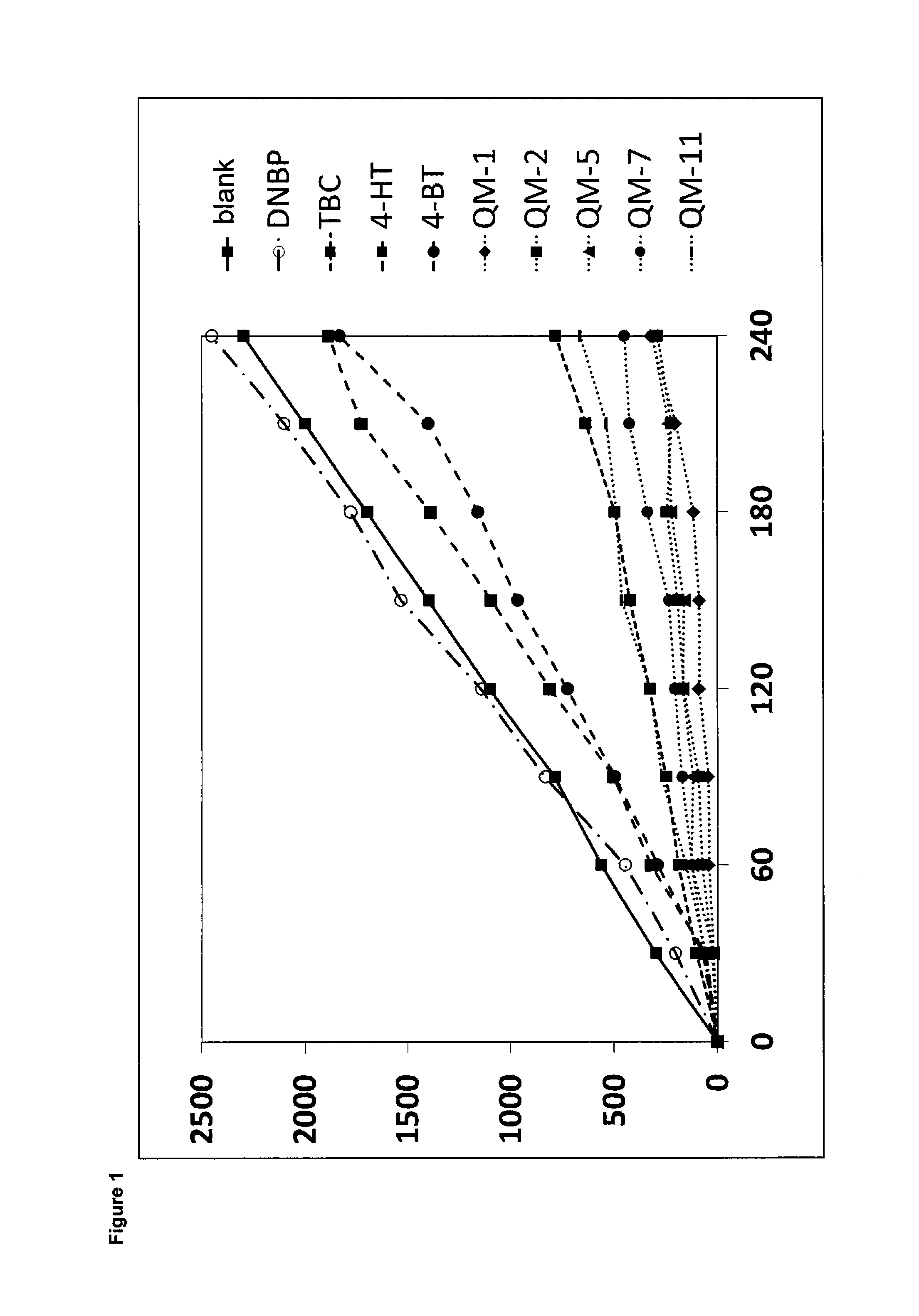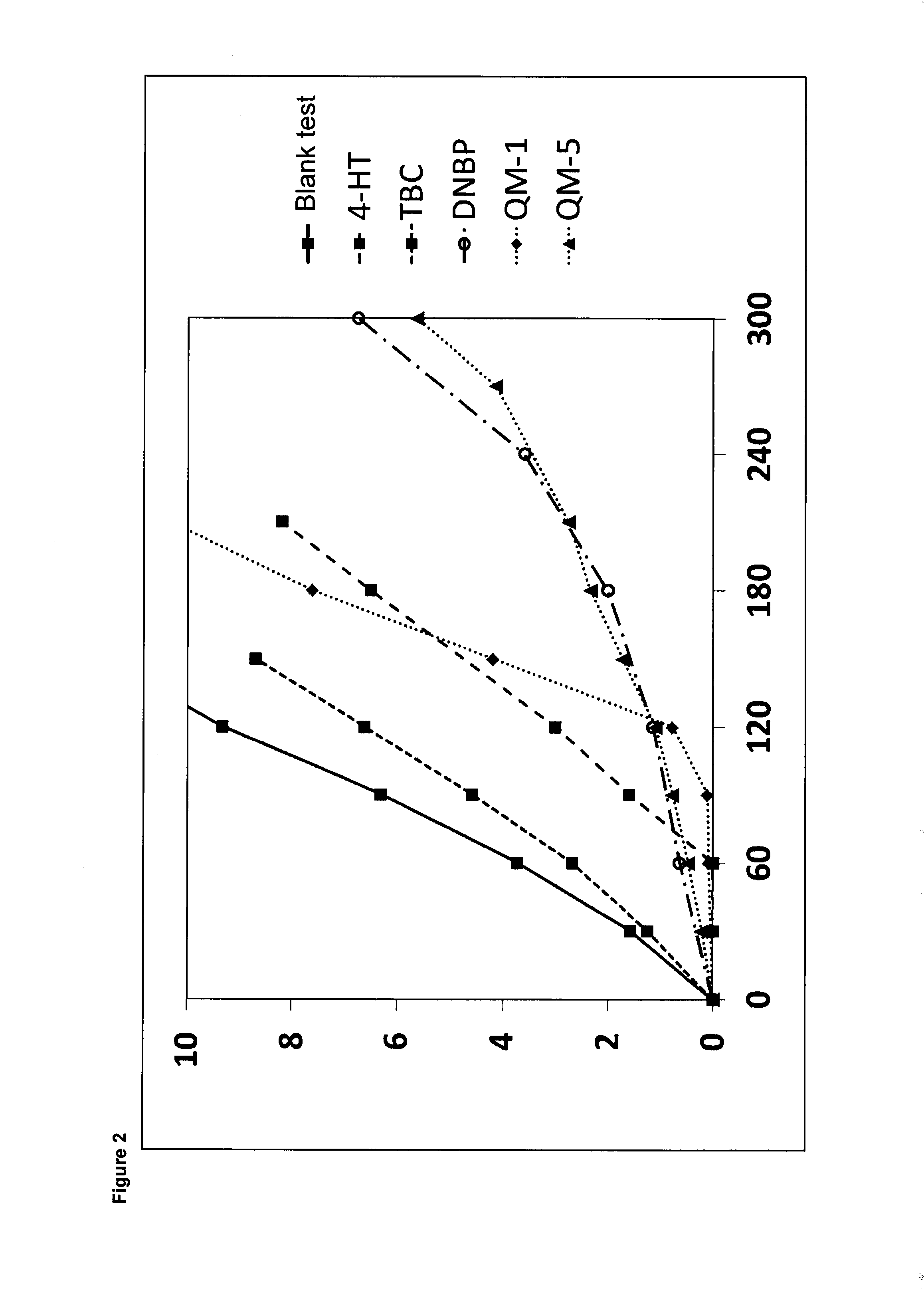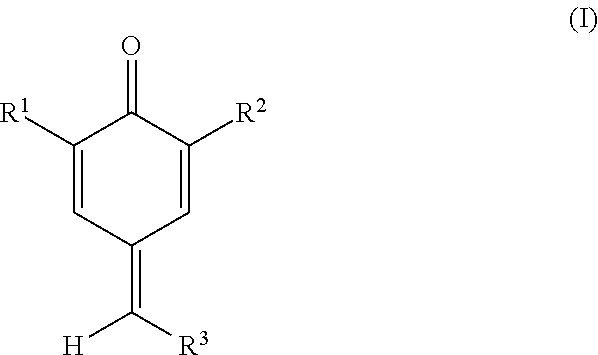Process and composition for inhibiting the polymerization of cyclopentadiene compounds
a technology of cyclopentadiene and polymerization, which is applied in the direction of thickeners, fuels, organic chemistry, etc., can solve the problems of reducing heat transfer, cdp and dcdp having a tendency to polymerize, and reducing the effect of cyclopentadiene polymerization
- Summary
- Abstract
- Description
- Claims
- Application Information
AI Technical Summary
Benefits of technology
Problems solved by technology
Method used
Image
Examples
examples
General Description—Screening Test; Examples 1-11
[0226]The following apparatus was set up: A 250 mL multi-neck flask was fitted with a reflux condenser, a nitrogen supply and a sampler.
[0227]A 100 g quantity of dicyclopentadiene (purity: 98%) was melted and weighed into the 250 mL flask.
[0228]Nitrogen was passed over the dicyclopentadiene, and 50 mg (500 ppm) of the in-test inhibitor shown in Table 1 are added.
[0229]While the flow of nitrogen over the dicyclopentadiene was continued, the flask was immersed in a preheated oil bath at 170° C. As the flask was immersed, the reaction started.
[0230]Beginning with the immersion of the flask, 0.5-1 mL samples were taken every 30 minutes with a glass syringe. The samples were diluted in a 1:9 weight ratio in ethylbenzene and measured using an evaporative light scattering (ELS) detector.
[0231]The ELS detector (Polymerlabs; model: PL-ELS 1000) was connected to an HPLC system which was operated without separation column. Ethylbenzene was used ...
examples 1-11
Results Regarding Examples 1-11
Example 1 (Comparative Example, not in Accordance with the Invention): Blank Value (Without Inhibitor Admixture)
[0239]The curve slopes up continuously over the measurement period of 4 hours, i.e. the polymer content increased continuously. Peak area was 1100 when measured after two hours, slightly more than doubling to 2300 after four hours.
examples 2 & 3 (
Comparative Examples, not in Accordance with the Invention): TEMPO derivatives (4-hydroxy-TEMPO; 4-butoxy-TEMPO)
[0240]The curve in FIG. 1 shows that almost no polymer formed in the first 30 minutes, but thereafter the curves (and hence the polymer content) slope up at the same slope as the curve of the blank test. A peak area of 1400-1700 was attained in this way after four hours.
PUM
| Property | Measurement | Unit |
|---|---|---|
| temperature | aaaaa | aaaaa |
| boiling point | aaaaa | aaaaa |
| temperatures | aaaaa | aaaaa |
Abstract
Description
Claims
Application Information
 Login to View More
Login to View More - R&D
- Intellectual Property
- Life Sciences
- Materials
- Tech Scout
- Unparalleled Data Quality
- Higher Quality Content
- 60% Fewer Hallucinations
Browse by: Latest US Patents, China's latest patents, Technical Efficacy Thesaurus, Application Domain, Technology Topic, Popular Technical Reports.
© 2025 PatSnap. All rights reserved.Legal|Privacy policy|Modern Slavery Act Transparency Statement|Sitemap|About US| Contact US: help@patsnap.com



